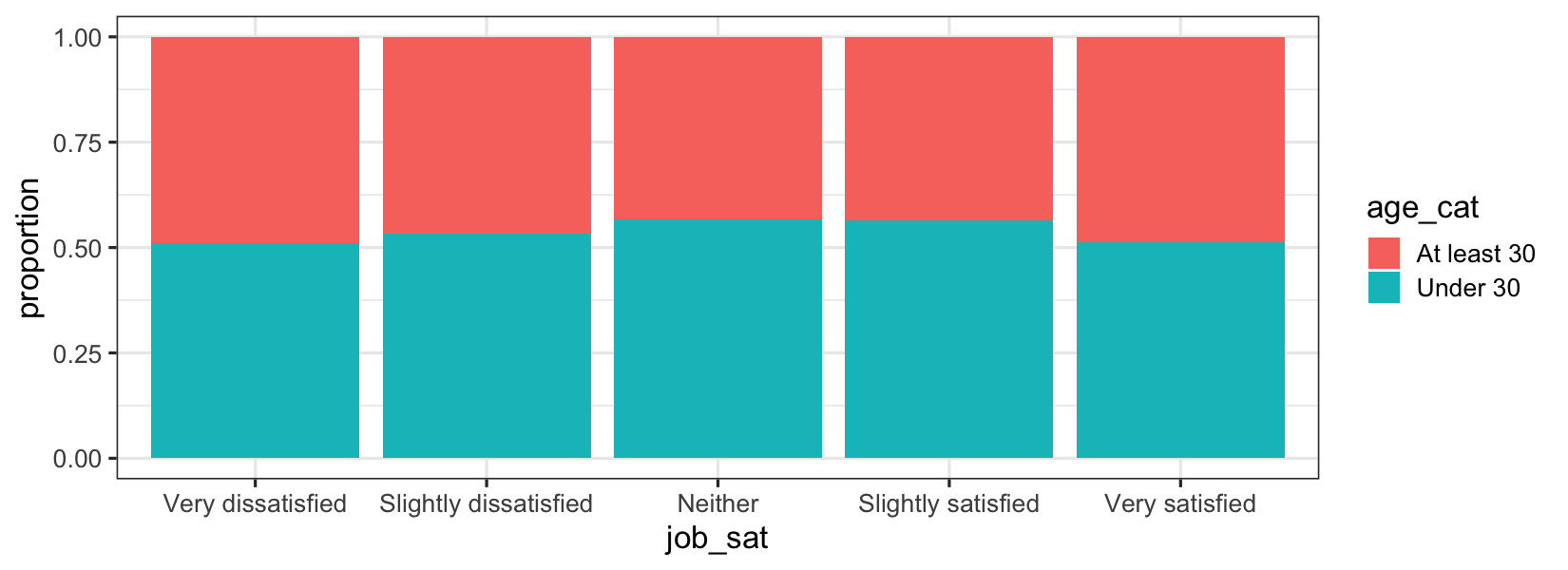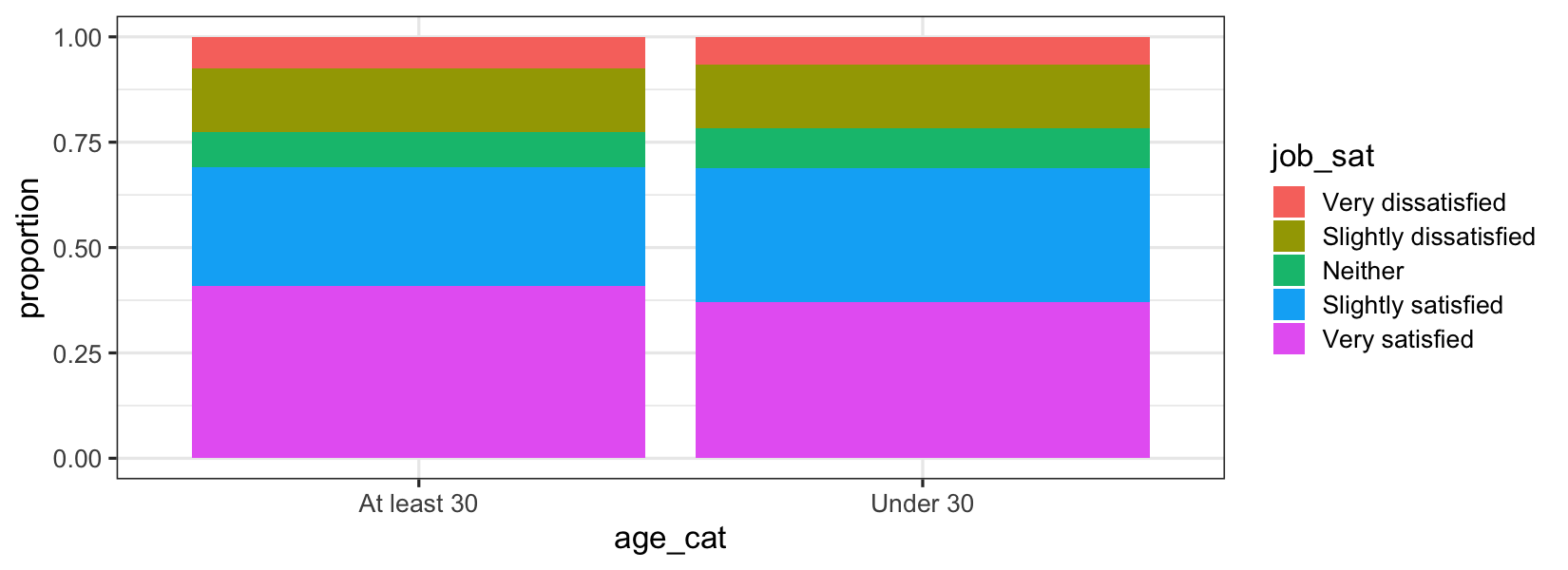Chi-square test of independence
Hypothesis Testing in R

Richie Cotton
Data Evangelist at DataCamp
Revisiting the proportion test
library(infer)
stack_overflow %>%
prop_test(
hobbyist ~ age_cat,
order = c("At least 30", "Under 30"),
alternative = "two-sided",
correct = FALSE
)
# A tibble: 1 x 6
statistic chisq_df p_value alternative lower_ci upper_ci
<dbl> <dbl> <dbl> <chr> <dbl> <dbl>
1 17.8 1 0.0000248 two.sided 0.0605 0.165
Independence of variables
Previous hypothesis test result: there is evidence that the hobbyistand age_cat variables have an association.
If the proportion of successes in the response variable is the same across all categories of the explanatory variable, the two variables are statistically independent.
1 Response and explanatory variables are defined in "Introduction to Regression in R", Chapter 1.
Job satisfaction and age category
stack_overflow %>%
count(age_cat)
# A tibble: 2 x 2
age_cat n
<chr> <int>
1 At least 30 1050
2 Under 30 1211
stack_overflow %>%
count(job_sat)
# A tibble: 5 x 2
job_sat n
<fct> <int>
1 Very dissatisfied 159
2 Slightly dissatisfied 342
3 Neither 201
4 Slightly satisfied 680
5 Very satisfied 879
Declaring the hypotheses
$H_{0}$: Age categories are independent of job satisfaction levels.
$H_{A}$: Age categories are not independent of job satisfaction levels.
alpha <- 0.1
- Test statistic denoted $\chi^{2}$.
- Assuming independence, how far away are the observed results from the expected values?
Exploratory visualization: proportional stacked bar plot
ggplot(stack_overflow, aes(job_sat, fill = age_cat)) +
geom_bar(position = "fill") +
ylab("proportion")

Chi-square independence test using chisq_test()
library(infer)
stack_overflow %>%
chisq_test(age_cat ~ job_sat)
# A tibble: 1 x 3
statistic chisq_df p_value
<dbl> <int> <dbl>
1 5.55 4 0.235
Degrees of freedom:
$(\text{No. of response categories} - 1) \times (\text{No. of explanatory categories} - 1)$
$(2 - 1) * (5 - 1) = 4$
Swapping the variables?
ggplot(stack_overflow, aes(age_cat, fill = job_sat)) +
geom_bar(position = "fill") +
ylab("proportion")

chi-square both ways
library(infer)
stack_overflow %>%
chisq_test(age_cat ~ job_sat)
# A tibble: 1 x 3
statistic chisq_df p_value
<dbl> <int> <dbl>
1 5.55 4 0.235
Ask
Are the variables X and Y independent?
library(infer)
stack_overflow %>%
chisq_test(job_sat ~ age_cat)
# A tibble: 1 x 3
statistic chisq_df p_value
<dbl> <int> <dbl>
1 5.55 4 0.235
Not
Is variable X independent from variable Y?
What about direction and tails?
args(chisq_test)
function (x, formula, response = NULL, explanatory = NULL, ...)
- Observed and expected counts squared must be non-negative.
- chi-square tests are almost always right-tailed. $^{1}$
1 Left-tailed chi-square tests are used in statistical forensics to detect is a fit is suspiciously good because the data was fabricated. Chi-square tests of variance can be two-tailed. These are niche uses though.
Let's practice!
Hypothesis Testing in R

